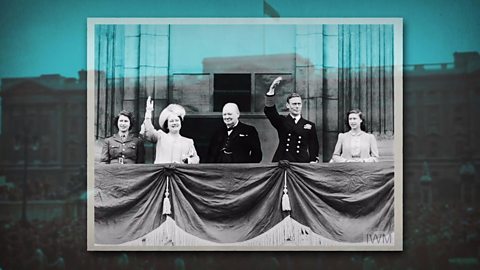Narrator: In the Second World War, you could be in serious danger even if you weren't fighting at the front.
In September 1940, German bombers began targeting key cities across Britain. From London, Coventry and Manchester in England. Cardiff and Swansea in Wales, through to Belfast in Northern Ireland and Clydebank in Scotland.
This period of intensive bombing carried on for eight months and became know as the blitz. The bombing during the blitz was incredibly damaging. Historic buildings like Coventry Cathedral were flattened and large parts of cities had to be re-built.
Those who stayed in the cities had to live by strict rules. Every night when it got dark, the cities would go into blackout. All the street lights were switched off and special thick black curtains and paint covered every window, to make sure cities could not be seen from aeroplanes overhead.
If you had a garden, you might have an air raid shelter made from iron buried in the ground, where you would have to sitfor hours during a raid, until the all clear was sounded. Other people used communal shelters. In London, many people used the underground to shelter from bombs.
Many men and women responded to the bombings by volunteering to work as air raid precautions, or ARP Wardens, or as extra ambulance drivers, to keep people and communities as safe as possible.
However, thousands of people had already been evacuated to the safer countryside, when war was first declared. Most of these were children separated from their parents.
Kitty was evacuated on September the first 1939, which also happened to be her ninth birthday.
Kitty: Mother said you are going on a trip and I really thought it was a birthday trip. We were all given this little cardboard box and I opened it and inside was a rubber gas mask. All the boys are putting them on and making funny noises and we were all in fits of laughter we really thought it was a joke, we really thought we were going out for a day.
Got to the school, all happy happy with this cardboard box. Label was put on us. All of us enjoying it. Coach came, on the coach, singing away. And then on the train.
Narrator: Once the children arrived in the countryside, they were taken to a school and told to stand in a line.
Kitty: In came lots of strange-looking people, they had like walking sticks and some had dogs and funny hats on and they walked by and they said, 'that one'. Teacher said: 'Off you go Bob, off you go with that lady.' One by one we were all picked off, and sent away.
Narrator: Kitty was separated from one of her sisters and sent to live in a horrible place.
Kiity: We went down into a basement and we looked down and she said there were these sort of cobbled steps she said, 'go down there, that's your room.' And we walked down and it was a mattress on a floor and we were so tired we didn't care. It was like bricks on the wall, it wasn't a wall, a plastered wall. it was just bricks, I had never seen it before. With a little opening with bars on it.
Narrator: But even if the evacuations were upsetting, at least it was safer than being in the cities. Especially, when the Germans sent over flying bombs and rockets towards the end of the war.
Bernard remembers these flying bombs.
Bernard: Well, they had a ramjet engine and it went mmmmmmmh and it got to London and most of them ran out of fuel. Some power dived but most didn't. So, you got this coming along and it stopped and it's got little stubby wings, so it didn't fall down vertically, it glided. So in five seconds you knew whether you were going to be killed or not.
Narrator: Did you know? Throughout the blitz, the King and Queen remained in Buckingham Palace in London, to show the public they were all in it together. On the first night of the blitz, many hundreds of people were killed in the East End of London.
About a week later, two bombs fell on Buckingham Palace and the King and Queen only just avoided death. Afterwards, the Queen said, 'I am glad we have been bombed, it makes me feel we can look the East End in the face.'
By the end of the blitz millions of buildings had been destroyed and thousands of people had died.
But had Britain not been prepared or had so many children not been evacuated to safety, the number of people killed could have been far greater.
However, the blitz was not the only time Britain was bombed. After the allied success on D-Day in 1940, Germans started launching their new weapons. Flying bombs and rockets called the V1 and the V2. They wouldn't stop until a few months before the end of the war.
And until then, ordinary people across Britain just had to hold on.
Video summary
This short film offers a digestible insight into the blitz and how the British people responded.
An eye-witness called Kitty describes first-hand the experience of being evacuated. Another, called Bernard, recalls the terror he felt as the bombs fell.
The ‘Did You Know’ section tells of the two bombs that fell on Buckingham Palace.
Created in partnership with Imperial War Museums.
Ed Murrow reporting on war torn London during the blitz.
Teacher Notes
This short film contains a number of elements that could be incorporated into different subjects as part of a cross-curricular lesson.
In art, pupils could study the work of Henry Moore and his depictions of the blitz.
This falls under the following parts of the national curriculum in England:
- Create sketch books to record observations and use them to review and revisit ideas.
- Improve mastery of art and design techniques, including drawing, painting and sculpture with a range of materials (for example, pencil, charcoal, paint, clay)
- Learn about great artists, architects and designers in history.
In English, your class could write about the experience of the blitz from different points of view – as a London civilian or as a pilot.
Additional fact for the class:
- At the peak of the blitz,177,000 Londoners slept in the tube system for safety.
Suitable for teaching history at KS2 in England, Wales and Northern Ireland and 2nd Level in Scotland.
This short film could also can be incorporated into different subjects as part of a cross-curricular lesson, especially when teaching:
- Art
- English
More from World War Two:
Britain declares war on Germany. video
This short film offers an overview of the events that led to Britain declaring war on Germany in 1939.
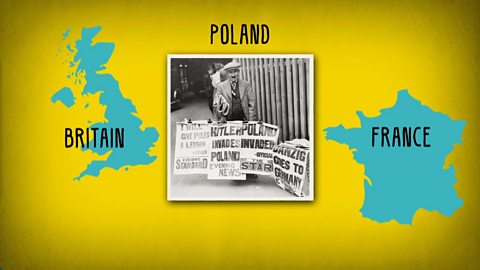
Rationing in the UK. video
This short film explains rationing in simple terms, offering a glimpse of a world that pupils may not be accustomed to.
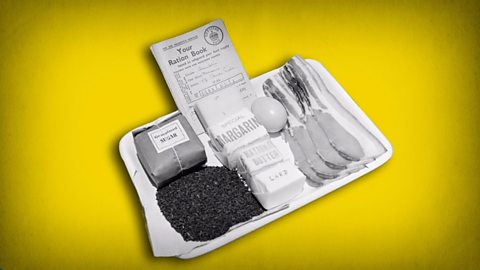
Geography of World War Two. video
This short film provides insight into the scope of the war and how many countries were involved.
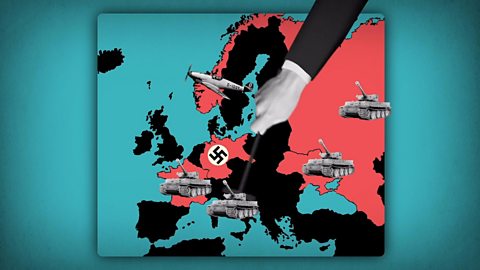
How propaganda was used during World War Two. video
This short film explains how people were persuaded to join the war effort, and the importance of motivational campaigns.
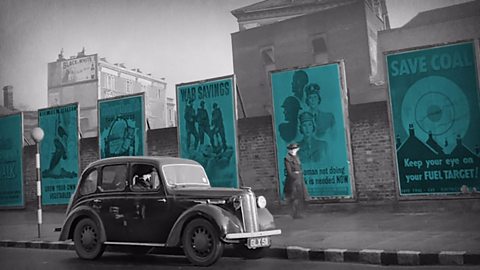
The Battle of Britain and beyond. video
This short film explains what the Battle of Britain was, who was involved and how radar was used throughout the battle.

Machines of the military. video
This short film highlights the importance of technology in the war effort and the key roles that tanks, planes and ships played.
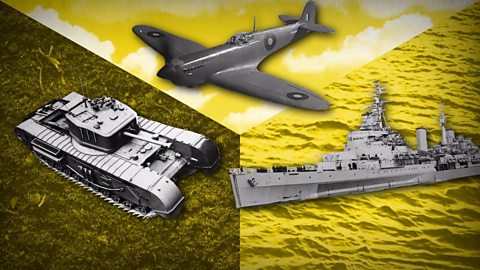
D-Day. video
This short film explores the significance of D-Day as well as highlighting what took place that day.
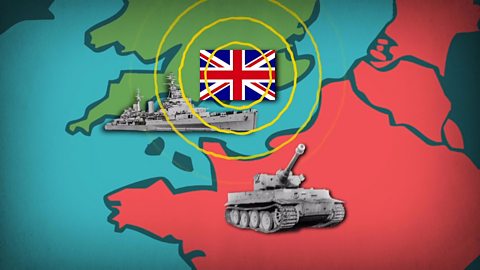
Codebreaking during World War Two. video
This short film explains how cracking Nazi Germany's coded messages helped win World War Two.
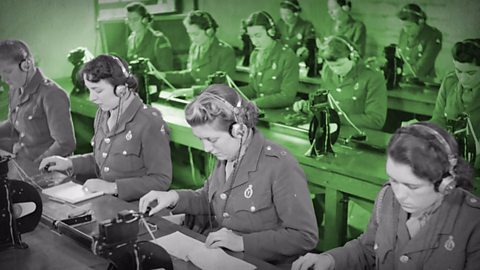
VE Day. video
This short film explains what VE Day and VJ Day were, and the events that led to the end of the war.
